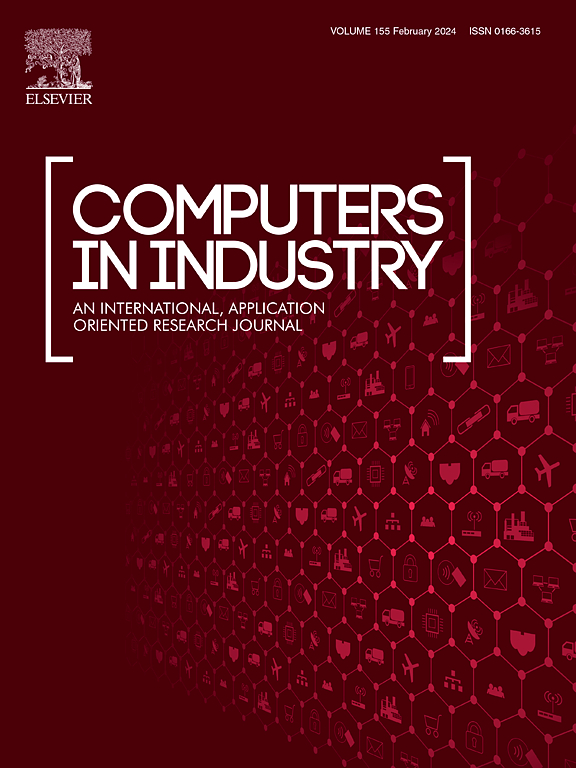3D modeling from a single image via a novel dual-decoder framework for Agile design
IF 8.2
1区 计算机科学
Q1 COMPUTER SCIENCE, INTERDISCIPLINARY APPLICATIONS
引用次数: 0
Abstract
In the fast-paced manufacturing industry, rapid and efficient product design is essential for meeting customer demands and maintaining a competitive edge. Despite advancements, transforming 2D design concepts into accurate 3D models remains a complex challenge, primarily due to the non-differentiability of traditional rendering processes that hinder gradient-based optimizations. To address this limitation, this paper introduces an innovative dual-decoder architecture that effectively separates the shape and color components of 3D models. By assigning separate decoders for vertex positions and color assignment, our proposed model enables targeted optimization of each, leading to more refined and authentic 3D reconstructions. Moreover, we have overcome the non-differentiability issue, enabling gradient-based learning through the incorporation of differentiable rendering techniques. These techniques facilitate gradient-based optimization, paving the way for data-driven enhancements in the design process. Our empirical research has demonstrated the effectiveness of our approach in generating high-fidelity 3D models from 2D inputs. Additionally, we have shed light on the sensitivity of hyperparameters within our framework, offering valuable insights for future model refinement and optimization. In summary, our research provides valuable insights into enhancing 3D modeling frameworks, thereby contributing to incremental progress in the field of computer-aided design and manufacturing.
通过敏捷设计的新型双解码器框架从单个图像进行3D建模
在快节奏的制造业中,快速高效的产品设计对于满足客户需求和保持竞争优势至关重要。尽管取得了进步,但将2D设计概念转换为精确的3D模型仍然是一项复杂的挑战,主要原因是传统渲染过程的不可微分性阻碍了基于梯度的优化。为了解决这一限制,本文引入了一种创新的双解码器架构,可以有效地分离3D模型的形状和颜色组件。通过为顶点位置和颜色分配分配单独的解码器,我们提出的模型可以有针对性地优化每个解码器,从而实现更精细和真实的3D重建。此外,我们克服了不可微性问题,通过结合可微渲染技术实现基于梯度的学习。这些技术促进了基于梯度的优化,为设计过程中数据驱动的增强铺平了道路。我们的实证研究证明了我们的方法在从2D输入生成高保真3D模型方面的有效性。此外,我们还阐明了我们框架中超参数的敏感性,为未来的模型改进和优化提供了有价值的见解。总之,我们的研究为增强3D建模框架提供了有价值的见解,从而有助于计算机辅助设计和制造领域的渐进式进展。
本文章由计算机程序翻译,如有差异,请以英文原文为准。
求助全文
约1分钟内获得全文
求助全文
来源期刊

Computers in Industry
工程技术-计算机:跨学科应用
CiteScore
18.90
自引率
8.00%
发文量
152
审稿时长
22 days
期刊介绍:
The objective of Computers in Industry is to present original, high-quality, application-oriented research papers that:
• Illuminate emerging trends and possibilities in the utilization of Information and Communication Technology in industry;
• Establish connections or integrations across various technology domains within the expansive realm of computer applications for industry;
• Foster connections or integrations across diverse application areas of ICT in industry.
 求助内容:
求助内容: 应助结果提醒方式:
应助结果提醒方式:


